Landscape Design
Gardening Guides
Edible Gardens
Before and After: 3 Beautiful Edible Gardens Rise From the Ground
Thoughtful designs, attractive raised beds and an abundance of plants transformed these outdoor spaces
An edible garden can be both beautiful and productive given the right planning and design. In the following three makeovers, landscape designers turned lackluster dirt plots into bountiful and beautiful outdoor spaces for growing fruits and veggies, gathering with friends and family, and overall enjoying life outside.
After: The new backyard design balances one homeowner’s desire for an organized look with the other’s wish for something a little looser and wilder. “One homeowner was really into everything looking very clean. The other wanted to grow anything and everything, so the design is ‘functional wild,’ ” landscape architect Leslie Batten says.
Cedar raised beds form a central square in the edible garden, with the abundant plantings softening the orderly layout. Pea gravel surrounds the beds. “We wanted something softer than the pavers around the raised beds,” Batten says. “I presented them with this gravel, and they liked the light tannish colors and the warm contrast it provided to the gray pavers.”
The team extended the patio to make more outdoor living space, matching the existing pavers and creating room for a couple of outdoor dining tables and an umbrella.
Work with a landscape designer near you
Cedar raised beds form a central square in the edible garden, with the abundant plantings softening the orderly layout. Pea gravel surrounds the beds. “We wanted something softer than the pavers around the raised beds,” Batten says. “I presented them with this gravel, and they liked the light tannish colors and the warm contrast it provided to the gray pavers.”
The team extended the patio to make more outdoor living space, matching the existing pavers and creating room for a couple of outdoor dining tables and an umbrella.
Work with a landscape designer near you
The homeowners planted arugula, sunflowers, zinnias, tomatoes, zucchini, herbs and more in the raised beds. “They wanted to attract bees to the garden to pollinate the plants,” Batten says. Edible plants abound — there are strawberries growing underneath an existing tree, and grapevines grow in the corner of the yard.
The raised beds — and the new perimeter fence — are made from long-lasting cedar. The planters feature extra-wide edges that serve as seats and ledges, as well as built-in benches with storage so the homeowners can sit and gather with friends.
What to Know About Adding or Renovating an Edible Garden
The raised beds — and the new perimeter fence — are made from long-lasting cedar. The planters feature extra-wide edges that serve as seats and ledges, as well as built-in benches with storage so the homeowners can sit and gather with friends.
What to Know About Adding or Renovating an Edible Garden
Here you can see the front of the house, with the new edible garden behind the fence in the backyard. Pumpkin and raspberry patches were planted in the side yard, which Batten says has attracted a lot of neighborhood attention. There’s also a mini orchard that includes an apple tree, an Asian pear tree and a plum tree.
Read more about this renovation
Read more about this renovation
2. Food Forest in a Low-Water Mediterranean-Style Garden
Yard at a Glance
Who lives here: A couple, their young daughter and their dog
Location: Pasadena, California
Lot size: 8,000 square feet (743 square meters)
Landscape designer: Briana Lyon of Califia Ecodesign
Before: An uninviting and unappealing backyard meant that the owners of this home in Southern California barely spent any time in it. “My clients weren’t using their backyard at all. The patio was too small and it was cracked, and there was a large dead maple tree,” landscape designer Briana Lyon says. “They wanted to grow a lot of food in the garden, they didn’t want to have to use a lot of water, and they wanted a lawn where their young daughter and dog could play.”
This formerly unused area behind the garage is where they decided to add the new edible garden.
Yard at a Glance
Who lives here: A couple, their young daughter and their dog
Location: Pasadena, California
Lot size: 8,000 square feet (743 square meters)
Landscape designer: Briana Lyon of Califia Ecodesign
Before: An uninviting and unappealing backyard meant that the owners of this home in Southern California barely spent any time in it. “My clients weren’t using their backyard at all. The patio was too small and it was cracked, and there was a large dead maple tree,” landscape designer Briana Lyon says. “They wanted to grow a lot of food in the garden, they didn’t want to have to use a lot of water, and they wanted a lawn where their young daughter and dog could play.”
This formerly unused area behind the garage is where they decided to add the new edible garden.
After: A wooden trellis and pergola separate the new food forest — an edible garden that features a diversity of plant types and layers — from the rest of the redesigned backyard. “We packed a lot in back here,” Lyon says.
Lavender, roses and grapevines also mark the garden’s boundary, bringing fragrance, beauty and Mediterranean style to the space. The edible plants inside include a diversity of plant types and layers meant to mimic how plants might grow in nature.
Shop for your yard on Houzz
Lavender, roses and grapevines also mark the garden’s boundary, bringing fragrance, beauty and Mediterranean style to the space. The edible plants inside include a diversity of plant types and layers meant to mimic how plants might grow in nature.
Shop for your yard on Houzz
Lyon, shown here, tends to edible plants in the garden’s new raised beds; they include basil, kale, strawberries and beans. The garden also has three types of grapes, cucumbers, tomatoes, peppers and artichokes.
This edible garden features some more unusual plants too, which Lyon planted to improve and enrich the soil. They include native California coffeeberry (Rhamnus californica, USDA zones 7 to 10; find your zone); Catalina currants (Ribes viburnifolium, Zone 8); California lilac (Ceanothus sp.); sticky monkeyflower (Mimulus aurantiacus, zones 7 to 10); and alpine strawberry plants. Edible flowers such as marigolds help deter pests.
It wouldn’t be a forest without trees, so there are citrus, apricot, apple, plum, fig and persimmon trees.
How to Grow 10 Favorite Fruit Trees at Home
This edible garden features some more unusual plants too, which Lyon planted to improve and enrich the soil. They include native California coffeeberry (Rhamnus californica, USDA zones 7 to 10; find your zone); Catalina currants (Ribes viburnifolium, Zone 8); California lilac (Ceanothus sp.); sticky monkeyflower (Mimulus aurantiacus, zones 7 to 10); and alpine strawberry plants. Edible flowers such as marigolds help deter pests.
It wouldn’t be a forest without trees, so there are citrus, apricot, apple, plum, fig and persimmon trees.
How to Grow 10 Favorite Fruit Trees at Home
And here’s a look at the rest of the backyard, with the home’s Spanish Revival style inspiring the Mediterranean-style courtyards (one for dining and one for lounging) that occupy the area closest to the house. Gravel paths cut through fragrant, drought-tolerant plants such as lavender and sage to connect the outdoor rooms — and the food forest beyond.
Read more about this renovation
Read more about this renovation
3. Edible Oasis With Fruit, Veggies, Bees and More
Yard at a Glance
Who lives here: Photographers Adam Voorhes and Robin Finlay
Location: Austin, Texas
Landscape designer: B. Jane Gardens
Before: For their home in Austin, Texas, Robin Finlay (seen here playing with dog Catfish) and Adam Voorhes envisioned a lush landscape for growing vegetables. But when they moved in, the backyard wasn’t much more than a weedy dirt pit surrounded by chainlink fencing.
They turned to landscape designer B. Jane, who transformed the barren space into an edible gardening paradise with plenty of room for outdoor entertaining and lounging.
New to home remodeling? Learn the basics
Yard at a Glance
Who lives here: Photographers Adam Voorhes and Robin Finlay
Location: Austin, Texas
Landscape designer: B. Jane Gardens
Before: For their home in Austin, Texas, Robin Finlay (seen here playing with dog Catfish) and Adam Voorhes envisioned a lush landscape for growing vegetables. But when they moved in, the backyard wasn’t much more than a weedy dirt pit surrounded by chainlink fencing.
They turned to landscape designer B. Jane, who transformed the barren space into an edible gardening paradise with plenty of room for outdoor entertaining and lounging.
New to home remodeling? Learn the basics
After: The backyard is now full of shade, edible plants and space for entertaining. The homeowners grow tomatoes, okra, pecans, citrus, wild olives and prickly pear cactus. They also collect eggs from their chickens and honey from their bees.
The majority of the veggie growing takes place in four raised beds in the yard’s back corner. “We try to stick to what’s hard to get in good quality at the store,” Voorhes says. They also grow basil, arugula, chard and Brussels sprouts.
They placed shredded hardwood mulch around the beds to keep weeds down, and a pea gravel path connects to a kit greenhouse that Voorhes put together. In the structure, he can start seeds and grow warm-season crops like tomatoes and basil during winter.
The majority of the veggie growing takes place in four raised beds in the yard’s back corner. “We try to stick to what’s hard to get in good quality at the store,” Voorhes says. They also grow basil, arugula, chard and Brussels sprouts.
They placed shredded hardwood mulch around the beds to keep weeds down, and a pea gravel path connects to a kit greenhouse that Voorhes put together. In the structure, he can start seeds and grow warm-season crops like tomatoes and basil during winter.
Looking back toward the house, you can see more of the yard, including the family’s outdoor kitchen and clotheslines. “We wanted to mesh midcentury modern with agrarian,” Jane says.
More edible plants are visible here, including lime, lemon and grapefruit trees growing in the metal troughs and rosemary shrubs framing the concrete pavers.
Although not shown here, the yard also features a water-catching system.
Read more about this renovation
More on Houzz
Read more edible-gardening guides
Find a landscape designer near you
Shop for gardening tools
More edible plants are visible here, including lime, lemon and grapefruit trees growing in the metal troughs and rosemary shrubs framing the concrete pavers.
Although not shown here, the yard also features a water-catching system.
Read more about this renovation
More on Houzz
Read more edible-gardening guides
Find a landscape designer near you
Shop for gardening tools
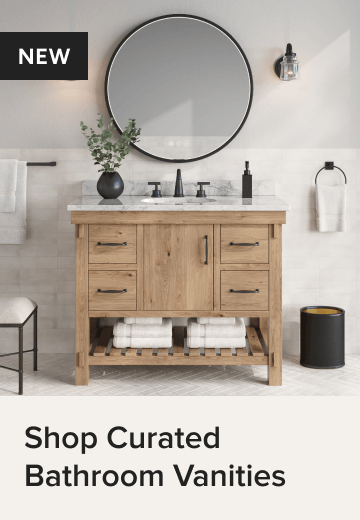
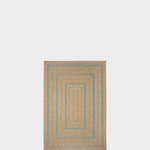
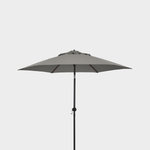
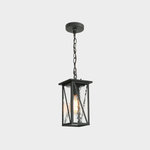
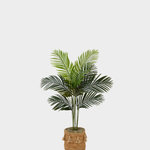
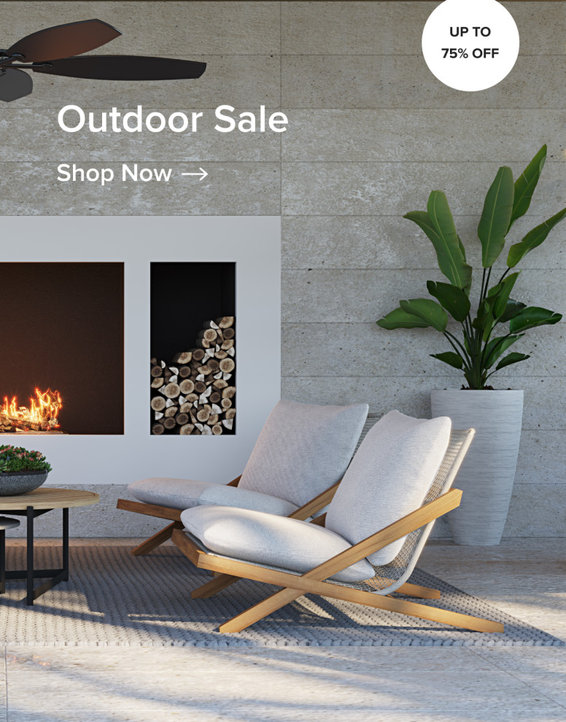











Yard at a Glance
Who lives here: A couple
Location: Seattle
Size: 1,440 square feet (134 square meters); 36 by 40 feet
Landscape architect: Leslie Batten of Board & Vellum
Landscape contractor: Avid Landscape Design & Development
Before: The owners of this Victorian-era home in Seattle began their outdoor remodel with a rock retaining wall cleanup and then decided to overhaul the entire yard (which included the front, back and side yards) after the wall area looked so improved.
As part of the renovation, the owners wanted to grow food and flowers and have space for entertaining friends and family. The backyard, shown here, is where they focused their outdoor living and edible-plant-growing efforts, working with the teams at Board & Vellum and Avid Landscape Design & Development to achieve their dream space.